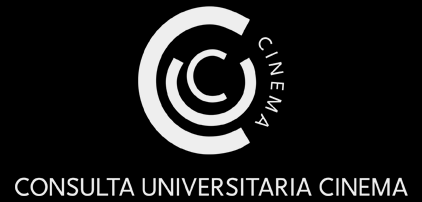Miglior libro italiano di studi sul cinema
Attribuito dalla Consulta Universitaria del Cinema

Vittorio Gallese, Michele Guerra, Lo schermo empatico. Cinema e neuroscienze, Raffaello Cortina, Milano 2015
A partire dall’interrogativo posto da Hugo Münsterberg “Perché andiamo al Cinema”? Lo storico e teorico del cinema Michele Guerra e il neuroscienziato Vittorio Gallese, nel volume scritto a quattro mani, Lo schermo empatico. Cinema e neuroscienze, si propongono di applicare le teorie delle neuroscienze e dei Film Studies per offrire risposte e riflessioni capaci di coinvolgere il più ampio e complesso ragionamento sul rapporto tra l’uomo e l’opera d’arte. In questa felice collaborazione tra scienziati e umanisti, non solo vengono dimostrate empiricamente intuizioni rimaste sinora nell’ambito della speculazione filosofica, ma viene allargato anche l’orizzonte di quest’ultima, ponendo nuovi interrogativi e riattualizzandone altri.
Lo schermo empatico ha il grande il pregio di rivolgersi contemporaneamente sia allo studioso che al lettore appassionato e sviluppa – con chiarezza e notevole pulizia formale – una teoria importante e originale che i due autori hanno denominato embodied simulation (simulazione incarnata), vale a dire quel meccanismo grazie a cui “si può instaurare una relazione di tipo diretto e non linguistico con lo spazio, gli oggetti, le azioni, le emozioni e le sensazioni altrui, per il tramite dell’attivazione di rappresentazioni sensori-motorie e viscero-motorie nel cervello dell’osservatore”. Ecco dunque la risposta all’interrogativo di Munsterberg che Gallese e Guerra ci danno attraverso questo importante lavoro che segna l’inizio di un percorso, quello fra cinema e neuroscienze, che si preannuncia ricco di scoperte e possibilità di indagine: “continuiamo ad andare al cinema perché ci porta sempre in un mondo a un tempo credibile e fantastico, con cui il nostro essere può entrare in risonanza e farci incarnare più liberamente le nostre emozioni e i desideri”.
Miglior traduzione italiana di un importante contributo agli studi cinematografici
Attribuito dalla Consulta Universitaria del Cinema

Joseph Roth, L’avventuriera di Montecarlo. Scritti sul cinema (1919-1935), Adelphi, Milano 2015 (traduzione di Leonardo Quaresima e Roberto Cazzola)
The translation is the final achievement of an insightful and savvy research spanned over decades in a twofold sense. On the one hand the outstanding survey on the relationships between Roth and the cinema started way back, and the present volume is a crystal-clear condensation and pondered selection of a multilayered work. On the other hand, the translation and critical edition complement a life-long research devoted to the birth and development of critical thinking as connected to cinema and modernity in Weimar Germany, which led Leonardo Quaresima to establish highly influential and illuminating editions both in Italy and abroad of key thinkers such as Siegfried Kracauer and Béla Balàzs.
By conveying Joseph Roth’s humorous, insightful, bright writing on cinema, the translation sheds a light on the medium’s paramount importance on the emergence of new ways to conceive subjectivity, representation, simulacra, as much as on the relevance of phenomenons like stardom, collective production, mass attendance, movie theatres, documentary filmmaking and photography as related to trauma. In making available to the Italian readership such pivotal part of the interwar European culture, the translation and critical edition greatly contribute to its deeper knowledge.
Best International Film Studies Book
Attribeuito dall’Editorial Board della rivista Cinéma&Cie. International Film Studies Journal

Francesco Casetti, The Lumière Galaxy. Seven Key Words for the Cinema to Come, Columbia University Press, New York 2015
The Lumière Galaxy is a compelling, outstanding, and inspiring book on what cinema became today and what tomorrow may bring, and for many a reason. Among these, to be certainly named are its fertile conciseness, its brave openness to an upcoming, and yet unforeseeable future, and its refined style.
The volume summons up an impressing range of theoretical references, putting in a productive tension classical and contemporary film theory, media studies and media archaeology, cultural and critical studies and poststructuralist thinkers. This swirling movement embraces also different cultural traditions, and builds a bridge between American and European reflection. It is no surprise that the work declared source of inspiration is Walter Benjamin, as his crucial notion of « dialectic image » might be considered in the case in point not only an abstract concept, but a very substantial way to approach and scrutinise contemporary media issues.
Furthermore, The Lumière Galaxy faces openly the drastic changes cinema and its apparatuses underwent in recent times. While never overlooking such shifts, the book points out a persistence: despite transformations, cinema perpetuates its existence in a scattered way, bringing about new forms of viewing, screening, circulating, sharing. This new life is still cinematic, as a cinematic identity persists. The Lumière Galaxy takes up the gauntlet to understand and describe this multiple existence, and instead of giving in and looking in sorrow to a lost past, attempts at diagnosing a possible future.
Finally, Francesco Casetti offers here an unequalled proof of the art of rhetorics, in the most noble meaning of the word. By choosing seven keywords to look at what is cinema today, seven concepts to talk about our cinematic experience today, he provides his readership with main entrances to understanding, and seven tools to grasp and define what the “homo cinematicus” is and will be.

